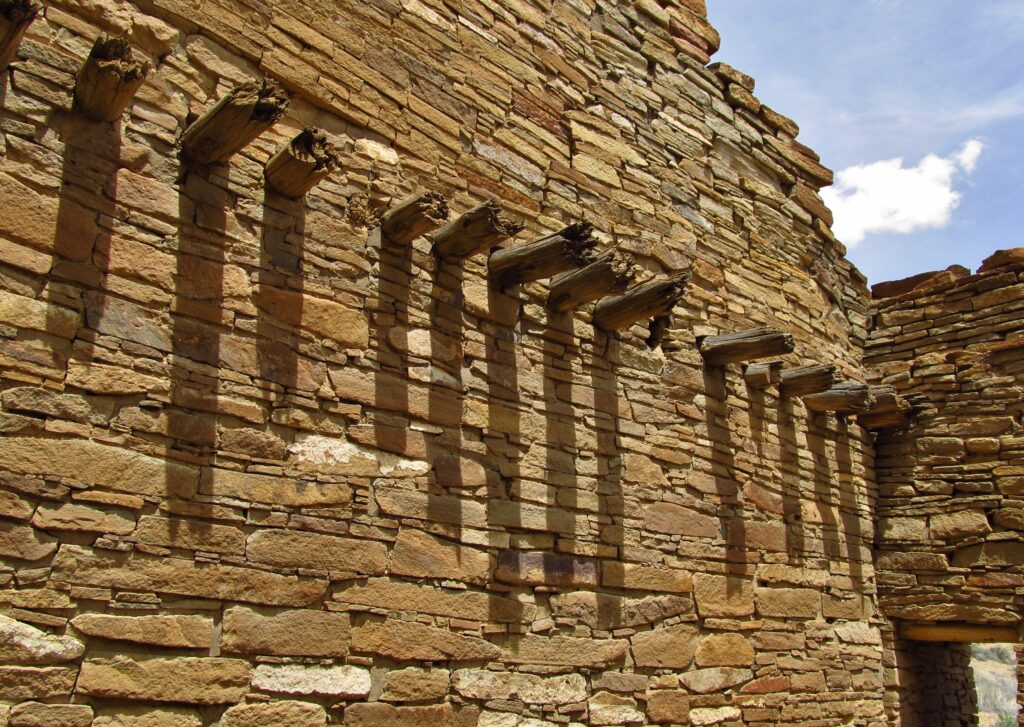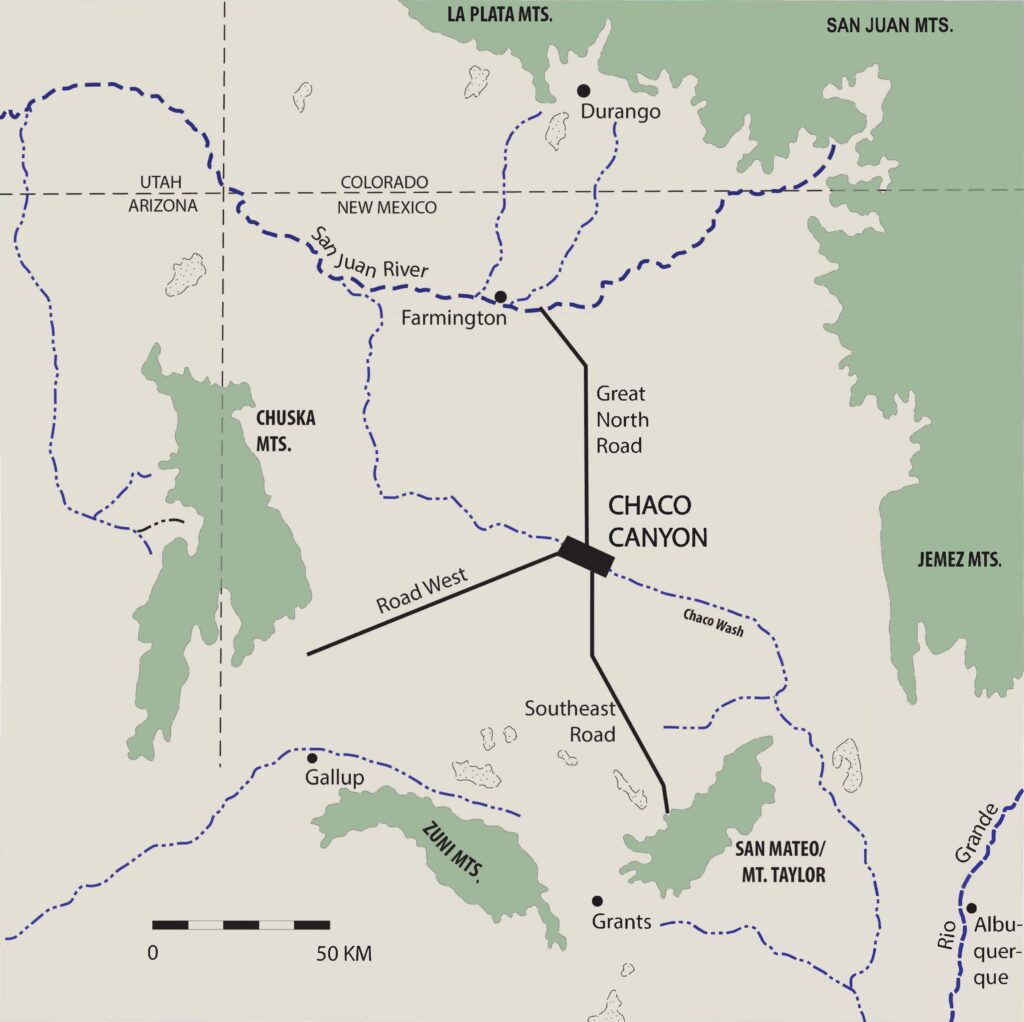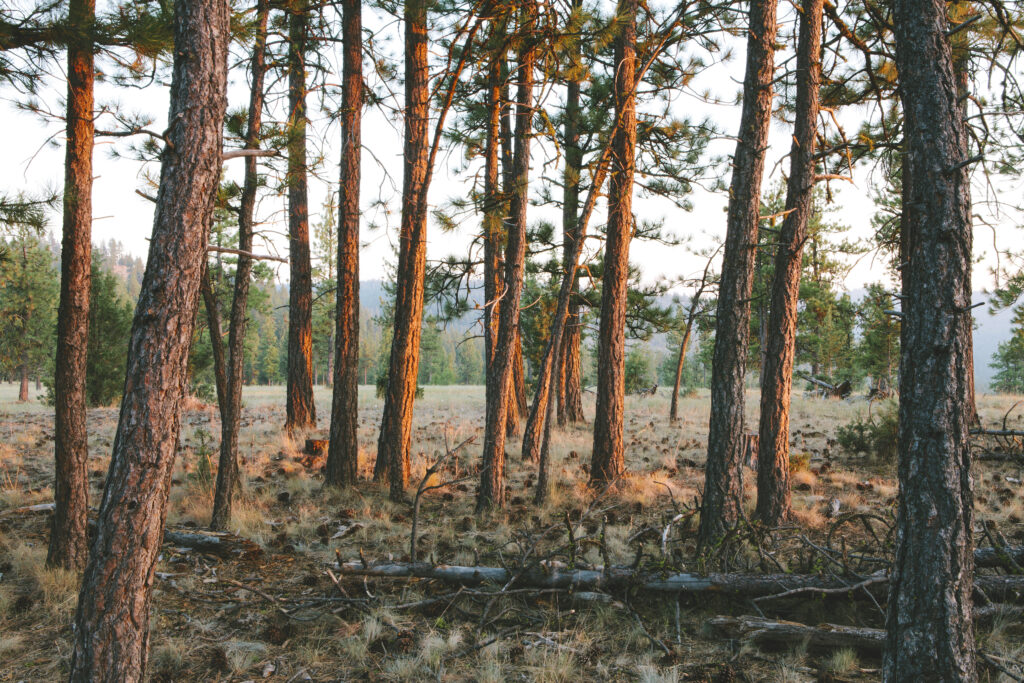The Astounding Origins of Chaco Canyon Timber
THE QUESTION OF CHACO CANYON TIMBERS
Some 1,000 years ago, a group of Ancestral Puebloans camped in a pine forest. They were part of an organized labor force focused on a singular task—harvesting trees that would be used to build the spectacular buildings of what we now call Chaco Culture National Historical Park in northwestern New Mexico.
Workers used stone axes to pummel away (not cut, as with metal axes) at the base of trunks until the trees could be tipped over. Then a crew stripped the bark and branches, while roughly shaping the log into a long, straight timber.
All told, these crews harvested at least 240,000 trees over a 300-year span. Many of the Chaco Canyon timbers were huge: Primary roofing beams averaged 8–10 inches in diameter, 15 feet long, and several hundred pounds.
But forests containing long, straight trees did not grow anywhere near Chaco Canyon during the last several thousand years. And there were no draft animals, wheeled vehicles, or navigable rivers to assist wood transport. Archaeologists have long wondered: Where did this wood originate—and how did Ancestral Puebloans move such massive timbers?
Given the epic scale of Chacoan construction, answers to these questions have implications for understanding Ancestral Puebloan social organization a millennium ago.
THE RIGHT RAW MATERIALS
A UNESCO World Heritage Site, Chaco Canyon is a remarkable place. There, in a mile-high desert, one of North America’s most complex societies flourished for three centuries, from roughly A.D. 850 to 1150. The most visibly striking features of Chaco Canyon are the remains of as many as 12 magnificent structures that archaeologists call “Great Houses.”
To build the structures, Ancestral Pueblo people needed wood, sandstone blocks, and mud mortar. Two of those ingredients—sandstone and mud—were literally under their feet. The surrounding landscape, now called the San Juan Basin, bears abundant sandstone formations, which provided tens of millions of small, flat blocks used for Chacoan buildings.
But the Great Houses also required hundreds of thousands of wooden beams—and the ideal trees did not grow locally. Although pinyon pine and juniper trees dot the San Juan Basin, those species tend to sprout chaotically, often with multiple stems and twisting branches. They rarely grow straight enough to yield quality timber for rectangular rooms in large, multistory buildings.
Of the Southwest trees, ponderosa pine, spruce, fir, and Douglas fir (an evergreen tree that is not really a fir) could provide the necessary tall, straight timbers. Yet, the closest forests that support those species cover mountains over 50 miles from Chaco Canyon, in all directions.
For much of the 20th century, archaeologists could only speculate about the origins of Chaco’s construction timbers. Then, in the mid-1980s, methods borrowed from other sciences began providing answers.
SEEKING CHACO CANYON TIMBER
These studies began in 1986, when University of Arizona geoscientist Julio Betancourt and colleagues examined 20 pieces of wood from Chetro Ketl, a Great House in Chaco Canyon. Using microscopes, they observed tiny features of the wood structure that vary among tree types.
Their analysis showed that Ancestral Puebloans constructed with ponderosa pine and Douglas fir, mountain species that were widely distributed and accessible. But surprisingly, the scientists also identified spruce and fir. Only found along isolated peaks 45–60 miles away, these trees must have been difficult to reach and haul home.
More extensive analysis came years later, in 2001, when a team led by environmental scientist Nathan English probed Chacoan wood origins through strontium isotopes. Although the analysis is complicated, the logic is simple: The element strontium comes in different weights, called isotopes.
The proportions of these isotopes vary across a landscape, and trees incorporate that isotopic signature as they grow. If the strontium isotope value measured in archaeological wood matches that in a living forest stand, it probably originated there.
English and colleagues measured strontium isotopes for more than 50 Great House wood samples as well as pencil-thin cores collected from living trees in surrounding forests. Comparing the values revealed that Ancestral Puebloans harvested roughly two-thirds of the analyzed spruce and fir trees in the Chuska Mountains to the west, and roughly one-third from the San Mateo Mountains and Mount Taylor to the southeast.
Next, geoscientist Amanda Reynolds led a bigger strontium analysis, including wood from three Great Houses and more than 200 living trees. The 2005 Journal of Archaeological Science study conclusively demonstrated that Chacoan workers also harvested trees in the La Plata and San Juan Mountains to the north and possibly on Hosta Butte to the south.
Finally, in 2015, dendrochronologist Chris Guiterman’s team added another method to the mix. Examining tree-ring patterns on 170 timbers from seven Great Houses, the researchers demonstrated that about 70 percent of the wood came from the Chuska Mountains to the west after around A.D. 1020.
Taken together, these studies reveal that Ancestral Puebloans harvested Chaco Canyon timbers from several mountain ranges in present-day Colorado, Arizona, and New Mexico. Their harvesting area covered roughly 7,500 square miles—larger than modern-day Rhode Island and Connecticut combined.
We can now see the forest for the trees.
LONG HAULS FOR CHACO CANYON TIMBERS
These biochemical results accord with Indigenous Oral Traditions from numerous societies and archaeological evidence for how Native peoples used natural resources before Europeans colonized their lands.
Ancestral Puebloans traveled extensively, gathered raw materials from distant sources, and traded items with other societies that resided hundreds to thousands of miles away. Wood acquisition was just one part of those routine but remarkable activities.
Even with evidence from Indigenous knowledge keepers, archaeologists, and other scientists, many questions remain. How did Ancestral Puebloans decide which trees to fell in any given year? Did they deplete resources or manage them sustainably? The size, composition, and organizational structure of Chaco Canyon’s timber crews remains a mystery.
It is known, however, that Ancestral Puebloan construction workers must have carried the logs along the vast Chacoan road system. None of the Chaco Canyon timbers show damage consistent with a 50-plus-mile roll, and the regional rivers run the wrong way or are too shallow for safe timber transport. It’s possible workers used tumplines, carrying straps around their heads, to ease the burden.
For those who think a day planted before a computer constitutes hard work, schlepping a 200-pound log more than 50 miles is daunting. For a society to do this a quarter million times without wheeled vehicles or draft animals approaches incomprehensibility. But schlep those beams they did, giving us yet another reason to be amazed by the Ancestral Puebloan residents of Chaco Canyon.
Correction: April 17, 2023
An earlier version of this article cited 600-pound logs based on previous estimates. A recent study shows they were likely 187–309 pounds.
































